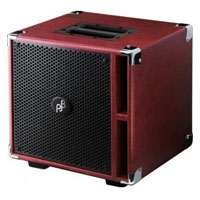
Whether you’re an intermediate or advanced guitar player, the amplifier is an important part of creating your sound. While shopping around, learn how guitar amplifiers work, what they do and their key features.
How a Guitar Amplifier Works
Electric and acoustic-electric guitars are equipped with a pickup. The amplifier takes the signal, sends it through a circuit and makes it louder as it passes through the speaker. This arrangement not only gives your electric guitar a voice, but also opportunities for distortion and tone coloring without a set of pedals.
Within this basic picture, guitar amplifiers have two power stages:
- The preamp, often equipped with a tone stack or EQ section, grows the signal from the pickup and starts to give your sound personality.
- The power amp further amplifies the signal, so it’s ready to pass out of the speaker. This section may also have a presence control for adjusting frequencies.
Aside from these basics, your amplifier may have an effects loop. A power transformer also converts the typical 120V AC voltage from a wall outlet to the amount needed to power it.
Types of Guitar Amplifiers
Two basic types of guitar amplifiers are available:
- Combo Amps: This more portable and compact solution pairs a preamp and power amp with a speaker, packaging them into a single unit. At home, setup is minimal. Combo amps are ideal for beginners, practicing and transporting your gear to gigs.
- Amp Heads: To generate a tone, this standalone amplifier needs to be connected to a speaker, which requires learning more about proper amplifier and speaker pairings. On the other hand, this mix-and-match approach opens the door to more sound and tone possibilities.
Along with these basic types, you may also come across amp simulations. Also known as an amp sim or emulator, software orchestrates the amplification process. This option tends to be the most compact, ideal for bedroom recordings and offers a greater range of effects.
Within this framework, you have to consider another factor: how the guitar amplifier is constructed. This is divided among solid-state and tube designs:
- Tube amps are standard professional-quality amps. They use a set of glass tubes to transport voltage and have a more complex, richer sound. An older design, class A amps cause the voltage to pass through tubes one by one and distortion occurs earlier in the amplification process. Newer Class AB amps do this at once and tend to produce a cleaner tone. Instead, distortion only occurs at a louder volume.
- Solid-state amps offer a more straightforward, plug-and-play combination that requires minimal maintenance and produces a direct, cleaner tone. Using transistors instead of tubes, these amplifiers are ideal for developing technique as a player and are also heard in some rock and heavy metal for their precision. Sound wise, the “compression” aspect and warmth won’t be there, but these amps also provide some room for distortion.
In addition to these two, you may come across:
- Hybrid amps, which marry aspects of tube and solid-state amps.
- Modeling amps, which replicate the qualities of tube and solid-state amps digitally. As they provide access to a wide tone bank, modeling amps offer a more affordable solution for recording.
Electric and bass guitars require two different sets of amplifiers. Amps for electric bass better accommodate lower frequencies and are not engineered to bring out the electric guitar’s upper range.
Features of Guitar Amps
To get the sound you need, guitar amps often include a mix of the following through the “tone stack”:
- EQ controls, which accent aspects of the bass, treble and mid parts of your sound.
- Gain knob, which is typically used for distortion purposes.
- Effects, which let you add attributes to your sound without having to use a pedal board. The effects loop helps control their use.
- Multiple channels with a choice of sounds and a switch to toggle between.
- Output switches, which provide your sound a degree of control.
Wattage, Amps, Size and Loudness
Greater wattage does not mean a louder sound. Instead:
- Professional amps are typically centered in the 30 to 100-watt range. While this seems vast, there’s only a five-decibel difference within the spectrum.
- Practice amps are what you’ll primarily use at home. These smaller combo models have an eight to 12-inch diameter speaker to project your sound, yet not get too loud.
- Live performances do not always require a bigger amp. Instead, microphones are part of projecting and controlling the sound the audience hears. Meanwhile, you’ll gauge your sound from a monitor. Live amps often stick within the 30 to 100-watt range and may have a few 12-inch speakers.
- For recording, amps with a cabinet emulator plug directly into a mixing deck or DAW via USB to re-route your sounds and limit unintentional distortion.
If you’re interested in upgrading your sound, shop electric guitars and amplifiers at DuBaldo Music Center. Browse online, then visit our Manchester store to explore further.
